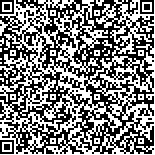| 引用本文: | 严伟伟,李国辉,贾仰民,娄懿,干晓瑜.芍药苷对醋酸铅诱导海马神经元凋亡及Bcl-2/Bax蛋白表达的影响[J].中国现代应用药学,2022,39(6):730-737. |
| YAN Weiwei,LI Guohui,JIA Yangmin,LOU Yi,GAN Xiaoyu.Effects of Paeoniflorin on Apoptosis and Bcl-2/Bax Protein Expression in Hippocampal Neurons Induced by Lead Acetate[J].Chin J Mod Appl Pharm(中国现代应用药学),2022,39(6):730-737. |
|
| |
|
|
| 本文已被:浏览 1483次 下载 713次 |

码上扫一扫! |
|
|
| 芍药苷对醋酸铅诱导海马神经元凋亡及Bcl-2/Bax蛋白表达的影响 |
|
严伟伟, 李国辉, 贾仰民, 娄懿, 干晓瑜
|
|
杭州市红十字会医院职业病科, 杭州 310003
|
|
| 摘要: |
| 目的 探讨芍药苷(paeoniflorin,PF)对醋酸铅诱导海马神经元凋亡及Bcl-2/Bax蛋白表达的影响。方法 分离培养胎鼠海马神经元细胞,细胞免疫荧光染色鉴定纯度。MTT测定海马神经元细胞活力以确定醋酸铅最适造模浓度及时间,同时筛选合适剂量PF干预海马神经元凋亡。依据MTT测定结果,分为空白组、模型组和20,40,80 μmol·L-1 PF组干预海马神经元细胞,作用24 h后,加醋酸铅染毒,检测细胞色素C (cytochrome C,Cyt-C)含量、线粒体膜电位及细胞内Ca2+浓度。流式细胞仪检测细胞凋亡情况,Western blotting测定海马神经元细胞中caspase-3、cleaved-caspase-3、caspase-8、cleaved-caspase-8、caspase-9、cleaved-caspase-9、Bax、Bcl-2蛋白表达水平。结果 细胞免疫荧光染色鉴定结果显示分离培养的细胞为海马神经元细胞,且纯度较高。MTT测定结果显示醋酸铅最适造模浓度及时间为25 μmol·L-1染毒24 h;PF剂量为20,40,80 μmol·L-1可显著改善海马神经元细胞活性,呈剂量依赖性。与空白组相比,模型组Cyt-C含量、凋亡率、细胞内Ca2+浓度显著升高(P<0.01),线粒体膜电位显著降低(P<0.01)。与模型组相比,40 μmol·L-1 PF组和80 μmol·L-1 PF组可降低Cyt-C含量、凋亡率、细胞内Ca2+浓度(P<0.05或P<0.01),升高线粒体膜电位(P<0.01),20 μmol·L-1PF组可显著升高线粒体膜电位(P<0.05)。此外,一定剂量的PF可下调cleaved-caspase-3、cleaved-caspase-8、cleaved-caspase-9、Bax蛋白表达,上调Bcl-2蛋白表达。结论 PF可抑制醋酸铅诱导的海马神经元凋亡,可通过调控Bcl-2/Bax蛋白表达发挥神经保护作用。 |
| 关键词: 芍药苷 醋酸铅 海马神经元凋亡细胞 Bcl-2/Bax蛋白 |
| DOI:10.13748/j.cnki.issn1007-7693.2022.06.003 |
| 分类号:R285.5 |
| 基金项目:浙江省中医药科技计划项目(2020ZA082) |
|
| Effects of Paeoniflorin on Apoptosis and Bcl-2/Bax Protein Expression in Hippocampal Neurons Induced by Lead Acetate |
|
YAN Weiwei, LI Guohui, JIA Yangmin, LOU Yi, GAN Xiaoyu
|
|
Department of Occupational Medicine, Hangzhou Red Cross Hospital, Hangzhou 310003, China
|
| Abstract: |
| OBJECTIVE To investigate the effect of paeoniflorin(PF) on hippocampal neuron apoptosis and Bcl-2/Bax protein expression induced by lead acetate. METHODS Hippocampal neurons of fetal rats were isolated and cultured, and the purity was identified by immunofluorescence staining. MTT assay was used to determine the hippocampal neuron cell viability so as to determine the optimal modeling concentration and time of lead acetate, while screening the suitable dose PF intervention on hippocampal neuron apoptosis. Based on the MTT assay results, the hippocampal neuronal cells were divided into blank, model and 20, 40 and 80 μmol·L<>sup-1 PF groups for intervention, followed by lead acetate staining 24 h, and cytochrome C(Cyt-C) content, mitochondrial membrane potential and intracellular Ca2+ concentration were detected. Cell apoptosis was assessed by flow cytometry, and the protein expression levels of cleaved caspase-3, cleaved-caspase-3, caspase-8, cleaved-caspase-8, caspase-9, cleaved-caspase-9, Bax and Bcl-2 in hippocampal neuronal cells were determined by Western blotting. RESULTS The identification result of cell immunofluorescence staining showed that the isolated and cultured cells were hippocampal neuronal cells with high purity. The results of MTT assay showed that lead acetate at the optimal concentration and time of 25 μmol·L<>sup-1 for 24 h. PF at the dose of 20, 40 and 80 μmol·L<>sup-1 could significantly improve the cell activity of hippocampal neurons in a dose-dependent manner. Compared with the blank group, the Cyt-C content, apoptosis rate, intracellular Ca2+ concentration in the model group were significantly increased(P<0.01), and the mitochondrial membrane potential was significantly decreased(P<0.01). Compared with the model group, 40 μmol·L<>sup-1 PF and 80 μmol·L<>sup-1 PF group decreased Cyt-C content, apoptosis rate, intracellular Ca2+ concentration(P<0.05 or P<0.01), increased mitochondrial membrane potential(P<0.01), and 20 μmol·L<>sup-1 PF group significantly increased mitochondrial membrane potential(P<0.05). Moreover, PF at a certain dose could downregulate the protein expression of cleaved-caspase-3, cleaved-caspase-8, cleaved-caspase-9 and Bax, and upregulate the protein expression of Bcl-2. CONCLUSION PF can inhibit hippocampal neuron apoptosis induced by lead acetate and may exert neuroprotective effects by regulating Bcl-2/Bax protein expression. |
| Key words: paeoniflorin lead acetate hippocampal neuron apoptosis cells Bcl-2/Bax protein |
|
|
|
|
